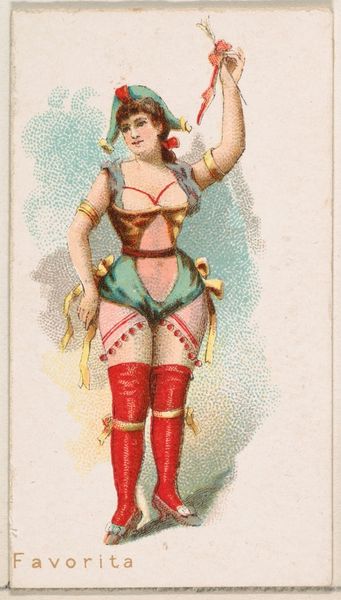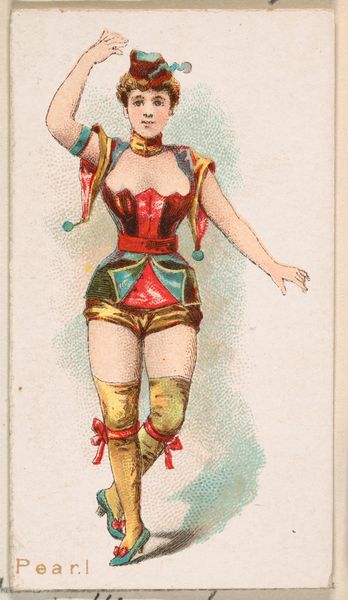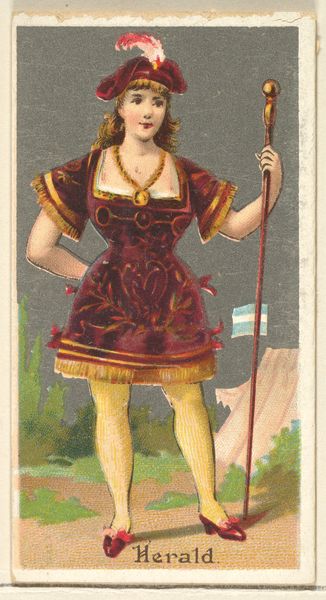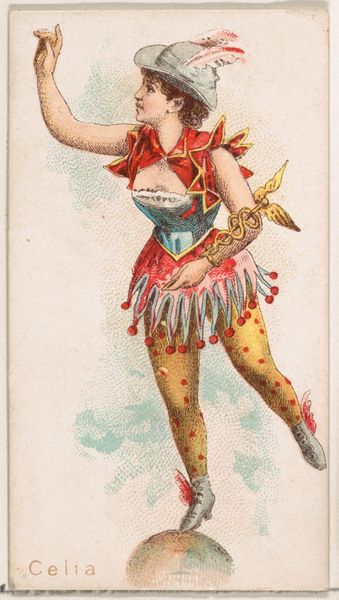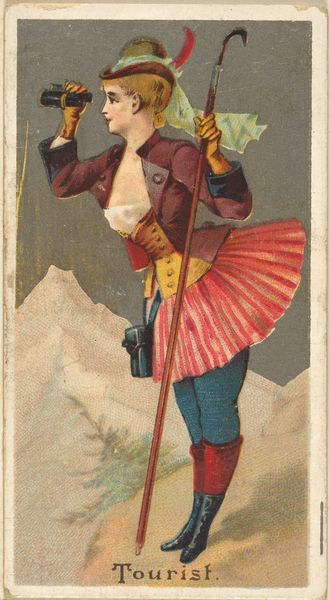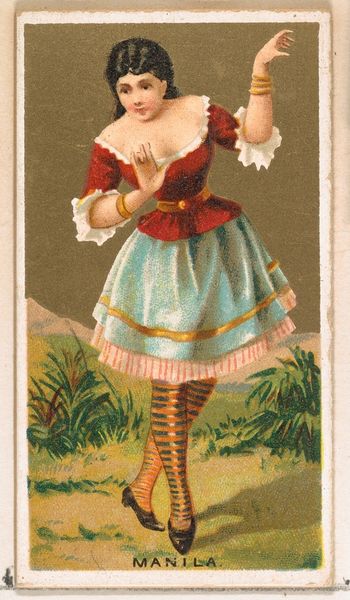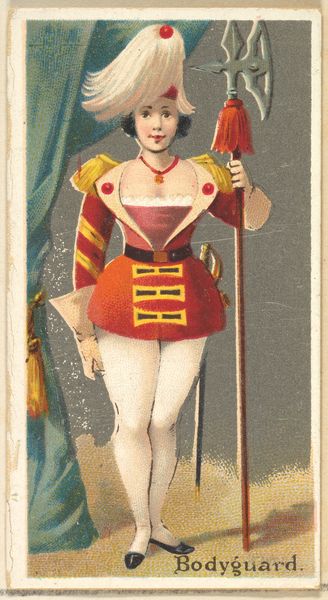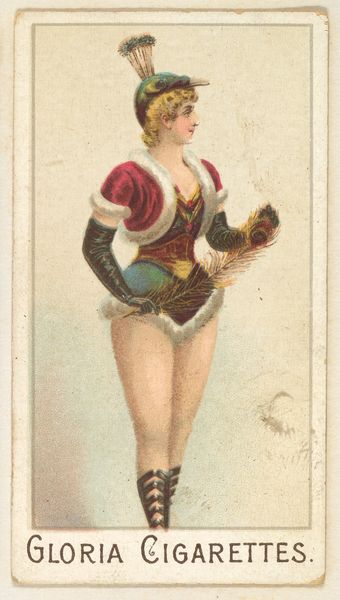
Postman, from the Occupations for Women series (N166) for Old Judge and Dogs Head Cigarettes 1887
0:00
0:00
drawing, coloured-pencil, print, watercolor
#
drawing
#
coloured-pencil
# print
#
caricature
#
caricature
#
watercolor
#
coloured pencil
#
watercolour illustration
#
genre-painting
Dimensions: sheet: 2 11/16 x 1 1/2 in. (6.9 x 3.8 cm)
Copyright: Public Domain
Curator: Let’s consider this rather provocative print: a “Postman” from the “Occupations for Women” series, created by Goodwin & Company in 1887. Part of a larger set of trading cards, it blends watercolor, colored pencil, and printing techniques. What are your initial impressions? Editor: My immediate reaction is the overt and, frankly, quite baffling sexualization of the subject. This is hardly representative of any historical reality! What were they thinking? Curator: This particular series aimed to depict women engaging in various trades. Given its era and purpose—specifically, tobacco advertisement—it becomes clear how societal biases, commercial exploitation and the male gaze intersect. The clothing seems absurd. Editor: The image pulls from a very long line of symbolic representations: the winged helmet became an iconic, shorthand way of signifying swiftness and communication thanks to Mercury, the Roman messenger god, but of course those wings have vanished. And the satchel she wears relates to similar earlier forms. I think of mail as almost sacred in a way, connecting people... this is clearly no expression of such a bond! Curator: Absolutely. Instead of representing empowerment or real labor, this postman figure perpetuates reductive fantasies about women and work. The imagery seems rooted in spectacle rather than reality, reinforcing hierarchies. This is so transparent! Editor: We are confronted with many contradictory elements, the somewhat severe background against this clownish representation of womanhood. Even the choice of colors - are these signifiers trying too hard, exaggerating and subverting themselves to make this an absurd, fetishized caricature? Curator: Such trade cards provide fertile ground to analyze changing perceptions about gender, class, and labor at the turn of the 20th century. By scrutinizing them we can shed light on enduring inequalities. Editor: When viewed through a symbolical lens, the overt sexualization of the figure overshadows any authentic representation of the postman profession or an actual individual. So, for me, the image itself, beyond the marketing ploy it represents, just sadly reinforces stereotype and subjugation through objectification. Curator: These artifacts can speak volumes about underlying cultural assumptions—and about resistance movements, as we try to deconstruct their underlying rhetoric and biases today.
Comments
No comments
Be the first to comment and join the conversation on the ultimate creative platform.


